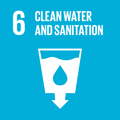- Docente: Maurizio Leonesi
- Credits: 3
- SSD: MED/50
- Language: Italian
- Teaching Mode: In-person learning (entirely or partially)
- Campus: Bologna
- Corso: First cycle degree programme (L) in Environment and Workplace Prevention Techniques (cod. 8487)
Learning outcomes
At the end of the course the student is able to: Know how to carry out the main checks for the health and hygiene evaluation of living and working environments. Know the techniques for water sampling and the evaluation of the results, Know the administrative measures inherent to the sanitation control, Know the individual and collective protection devices for workers.
Course contents
Hygiene and prevention of environmental risks
Detection and assessment of the main risk factors in living environments
Hygienic inconveniences
Unhealthy housing and housing problems
Health and hygiene opinions
Detection systems and tools
Housing overcrowding
Control of hygienic-sanitary infestations
Ministerial Decree of 5 July 1975
Measures: executive orders, contingent and urgent orders
Aesthetics, hairdressing, tattooing and piercing activities
Supervision of the use of cosmetics
Safety of cosmetics
Requirements for premises and equipment
Aspects of hygiene and safety
Municipal Regulation of Hygiene for the beauty and hairdressing activities
Asbestos
The presence of asbestos in living environments
Management of reports and supervisory interventions
Assessment of the state of conservation of materials containing asbestos
The remediation interventions
Swimming pools, swimming facilities, whirlpools
Requirements, physical, chemical and biological risks
State-Regions Agreement of January 16, 2003
Regional Discipline
The Legionella
Information, training, self-control
Legionella in accommodation facilities, health and social welfare facilities, swimming pools, structures for collective use.
Accommodation
Hygienic-structural requirements and reference legislation
The chemical safety of biocides, toys and detergents
Notes on supervision
All topics will also be treated with practical exercises, for the learning of techniques, visible if possible, with the UNIBO IT tools for non-attended students.
Readings/Bibliography
- Nicola Comodo, Gavino Maciocco, Igiene e sanità pubblica, Carocci 2002
- M. Dal Pont, La vigilanza in igiene e sanità pubblica, 2012, Insegnamento del 2º anno del corso di laurea triennale in Tecniche della prevenzione nell'ambiente e nei luoghi di lavoro-Università degli Studi di Padova-A.A. 2011-2012
- Normativa: D.M. 5 luglio 1975; Testo unico edilizia D.P.R. 380/2001 e s.m. e i., Regolamenti edilizi e di igiene comunali, Accordo Stato-Regione 16 gennaio 2003; leggi regionali, Circolari regionali, Linee guida del Ministero della Sanità in tema di tatuaggio e piercing, Regolamenti comunali, Piano Sanitario nazionale e Regionale, Testo unico leggi sanitarie R.D. 27.07.1934 n. 1265; Linee guida Ministero Sanità
Teaching methods
Lectures, operational reproduction techniques such as demonstrations and exercises to refine technical and operational skills by reproducing a procedure, tests to verify the achievement of the objectives of the teaching units identified, supplementary activities and recovery of topics covered, analysis and studies of real cases, simulation techniques (role playing - role play) for the interpretation and analysis of behaviors and social roles in interpersonal relationships
Assessment methods
Final exam, single test, in oral form, preferably in person, through questions aimed at verifying the completeness of the preparation of the knowledge acquired relating to the teaching program and the ability to elaborate specific topics in an analytical and synthetic way, as well as simulation of practical techniques of work.
The physical presence at the lessons, although obviously not determining a lower evaluation, nevertheless does not allow, given the presence of fundamental exercises, a complete learning.
The test therefore allows the teacher to understand the ability to know (knowledge) and know-how (skills) as presented in the lessons and with the support of the material provided.
THE EVALUATION
The purpose of the oral exam is to verify the student's ability to apply his or her knowledge and to make the necessary logical-deductive connections.
Graduation of the final grade: Preparation on a very limited number of topics covered in the course and analytical skills that emerge only with the help of the teacher, expressed in an overall correct language → 18-19;
Preparation on a limited number of topics covered in the course and ability to autonomous analysis only on purely executive matters, expression in correct language → 20-24;
Preparation on a large number of topics covered in the course, ability to make independent choices of critical analysis, mastery of specific terminology → 25-29;
Basically exhaustive preparation on the topics covered in the course, ability to make autonomous choices of critical analysis and connection, full mastery of specific terminology and ability to argue and self-reflection → 30-30L.
Teaching tools
Power Point presentations, photographic illustrations, videos, reference legislation, links to links for further information, illustrations on the blackboard, analysis of guidelines, as well as UNIBO platforms with a collection of material presented during the lessons.
Office hours
See the website of Maurizio Leonesi
SDGs


This teaching activity contributes to the achievement of the Sustainable Development Goals of the UN 2030 Agenda.
